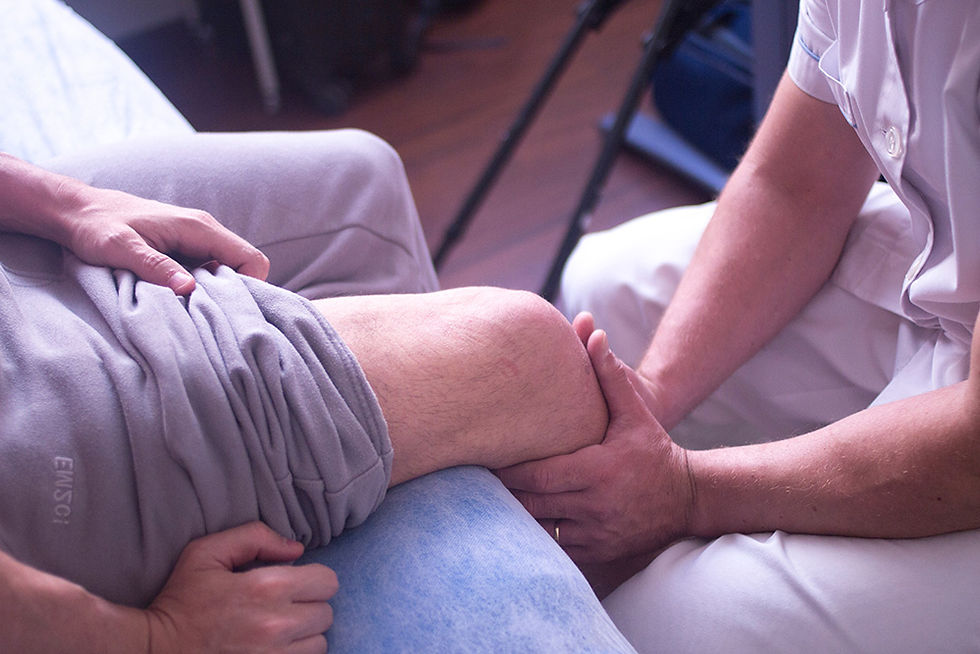What Is TMJ Therapy
- Vail-Summit Physical Therapy
- Jun 4, 2022
- 2 min read

The temporomandibular joint (TMJ) is actually two joints in the jaw. They connect the lower jaw to the skull on either side of the face, next to the ear. This joint is composed of the lower jaw (mandible) and the side and base of the skull (temporal bone).
When functioning properly, the TMJ facilitates the muscle movements that allow someone to chew, swallow, yawn, and talk. If the bones become misaligned, it can result in temporomandibular joint dysfunction.
Neck/cervical spine dysfunction and poor posture can also contribute to TMJ disorders. Headaches and neck pain could be the cause or contributing factor to TMJ disorders.
What is Temporomandibular Joint Dysfunction?
Temporomandibular joint dysfunction is commonly seen in individuals between the ages of 20 to 40 and tends to affect more women than men. It occurs when the bones in the TMJ become misaligned or damaged. This could be due to:
An injury to the jaw
Genetics
Arthritis
Chonic jaw clenching or teeth grinding
Bad posture
Poor teeth alignment
Displacement of the disk between the ball and socket of the joint
Disorders of the TMJ can impact the bone, muscles, and nerves in the jaw. Symptoms and warning signs of TMJ disorders include:
Jaw pain, pain with eating/chewing
Tenderness or pain in the hinge of the jaw
Aching around or in the ear
Facial pain
Lockjaw
Grating or clicking while moving the jaw
Headaches
In the majority of cases, TMJ disorders are not permanent and can be relieved through physical therapy.
Temporomandibular Joint Dysfunction Treatments
Physical therapy can restore jaw movement and reduce pain caused by TMJ disorder. During your first visit with our team at Vail-Summit Physical Therapy, a therapist who specializes in TMJ disorders will:
Assess your posture
Evaluate the range of motion in the neck and jaw
Palpated the area around your jaw
Evaluate the strength of your jaw, including postural muscles
Discuss your therapy goals
This physical evaluation will allow us to work with you to design a treatment plan for your unique TMJ disorder. The type of treatment for your TMJ disorder will be prescribed with the intention of:
Reducing pain
Decreasing inflammation
Improve jaw mobility
Restore normal jaw function
There are several treatments for TMJ disorder. At Vail-Summit Physical Therapy, we may recommend any or all of the following:
Dry needling
Posture exercises for neck and jaw
Applying heat or ice
Massaging the jaw, facial, neck, and shoulder muscles
Manual therapy to improve jaw movement
Electrical stimulation
Ultrasound
Using a mouth guard
Jaw exercises
With a dedicated physical therapist at your side, most cases of TMJ disorder improve within six to eight weeks. In rare instances, treatment can take longer and may require surgery to completely correct.
TMJ Therapy in Summit County
If you’ve been diagnosed with temporomandibular joint dysfunction, contact Vail-Summit Physical Therapy today! Our dedicated team of physical therapy experts will provide you with personalized care that improves jaw function and relieves pain.
Schedule a consultation by calling our offices or requesting an appointment via our online platform.




Comments